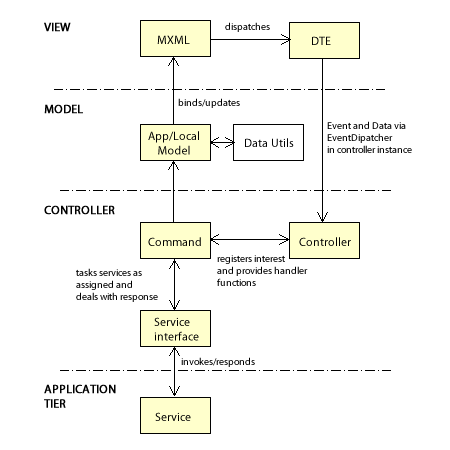Anonymous MVC Framework I (Big Picture)
October 18
The motivation behind the Anonymous MVC Framework (aMVC), was to separate the aspects of frameworks like Cairngorm and Pure MVC that simplify and empower application development, while avoiding the pitfalls of “centralization” that come with these implementations. The “Anonymous” portion of this framework is the use of a centralized control mechanism that simply acts as a traffic monitor for user and application initiated events.
The basic concept here is that “players” will register their interest in various events via the central controller. “Players” can be individual view components, or more commonly a command class representing a portion of the view (or it’s entirety). Part of the registration process is the pass-through of a callback function. It is in this callback that the actual activity triggered by the event is done. The callback can act within the command class, via a delegate, or directly within a view.
The framework advocates the use of a central application model (singleton), but does not preclude multiple models representing distinct portions of the application. This same holds true of all aspects of the framework, as each portion, instantiated as a singleton, is based on the qualified class. If you want to use the centralized version, call the base class, if you want to divide responsibility, simple extend the base for local use (as in Modules etc..). The overall structure is as follows:
Because of the anonymous nature of this framework, the components can be wired together with many variations:
In future posts I will elucidate further the components of this framework.

